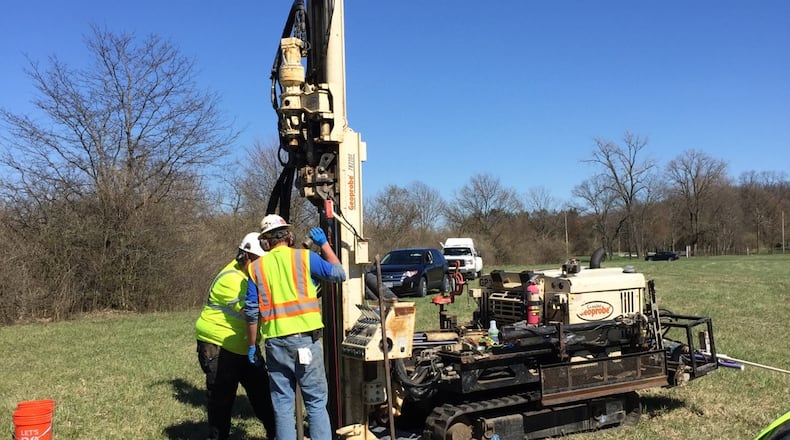Also known as “PFAS,” the chemicals are a group of chemicals common in industrial and other uses. They have been linked to cancer, and have become a local and national environmental concern.
The project is underway now, the base said. The team has received Environmental Protection Agency approval; collected soil, surface water and groundwater samples on affected sites; and analyzed the cost of actions, the base said. (It was not immediately clear which Environmental Protection Agency approved the effort.)
Weston Solutions, based in West Chester, Pennsylvania, has offices on East Monument Avenue in Dayton.
“The objective of the actions is to protect human health and the environment as quickly and efficiently as possible,” Greg Plamondon, a remedial project manager at the Air Force Civil Engineer Center, said in the base’s announcement. “This includes the protection of Airmen, site workers and any potential downgradient receptors impacted by PFAS at the sites.”
The team will treat the Hazmat Storage Facility on Area B of the base and current and former fire-training locations in Area A to “permanently mitigate and minimize human exposure to soil, groundwater and surface water that contains PFAS, chemicals formerly used in aqueous firefighting foam.”
The city of Dayton in May filed a $300 million lawsuit against Wright-Patt and the U.S. Department of Defense. The suit alleges the base consistently violated environmental laws, including the Safe Drinking Water Act, and water contaminated with forever chemicals above the recommended action level continuously flow into the city’s Mad River Wellfield.
Wright-Patt and DoD officials have denied the city’s allegations, saying they’ve followed federal guidelines and taken an aggressive approach to ensure contaminants migrating from the base remain below the federal recommended guidelines.
Several Miami Valley communities, including Dayton, have grappled with PFAS in recent years. Low levels of the contaminants were detected in 24 Southwest Ohio public water systems in counties such as Greene, Montgomery, Clark and Warren, according to the Ohio EPA. They made those discoveries while testing the more than 1,550 public drinking water systems across the state to determine if PFAS were present.
Said the base in its recent announcement: “The Air Force continues to evaluate and determine solutions for health effects, concerns about food safety and agriculture commodities, risk management of PFOS and PFOA in the nation’s products, and technology to eliminate or reduce any negative impact.”
A representative of Wright-Patterson’s host unit, the 88th Air Base Wing, referred questions to the public affairs office of the Air Force Installation Mission Support Center.
About the Author


